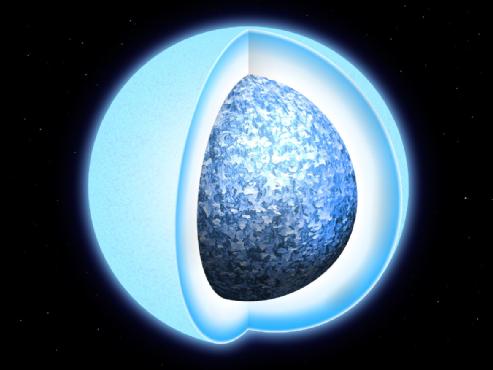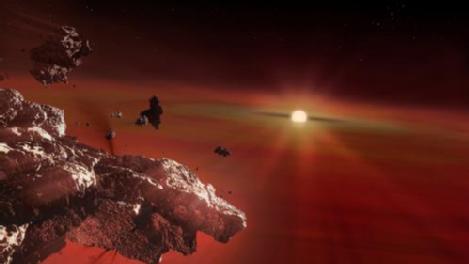Dr Pier-Emmanuel Tremblay, Leverhulme Trust Fellowship
White Dwarf Stars Having a Meal out of Planet Debris
White dwarfs are dense remnants of stars. They are the final evolutionary state of stars whose mass is not large enough to become a neutron star or a black hole.
With the aid of a Leverhulme Research Grant, Dr Pier-Emmanuel Tremblay and Dr Tim Cunningham from the Department of Physics will use three-dimensional numerical simulations of the white dwarf surface to dissect frequent planetesimal accretion events (where the white dwarf accretes planetary remains) to an unprecedented level of accuracy.
As many as 95% of these stellar remnants have a convective surface made of pristine hydrogen and helium gas, in which metallic debris plunge and become mixed by bulk fluid motions in a matter of hours.
To date, almost all studies have relied upon a 60-year-old, 1D prescription of convection, although it has been shown to have a major shortcoming in that it produces an on/off discontinuity at the top and base of the unstable convective layers. The method completely neglects convective overshoot - the phenomenon where 3D plumes travel outside the unstable regions.

White dwarf stellar interior in the process of solidifying into a carbon/oxygen crystal. Credit: University of Warwick/Mark Garlick.

Artist's impression of planetary crusts accreting into a white dwarf. Credit: University of Warwick/Mark Garlick.
Stellar modelling for the future
This research area is evolving rapidly thanks to the spacecraft Gaia of the European Space Agency which has provided, for the first time, a near-complete census of all stellar systems within 300 light-years of the Sun. This includes thousands of white dwarfs polluted by asteroid debris. Using these data and spectroscopic follow-ups, the researchers will lead a robust characterisation of the diversity in the composition of rocky exoplanets across Galactic age and stellar mass. This includes chemical abundances for life-forming elements such as water, carbon and silicon, which can then be compared to the properties of meteorites in our own solar system and planet formation models.
